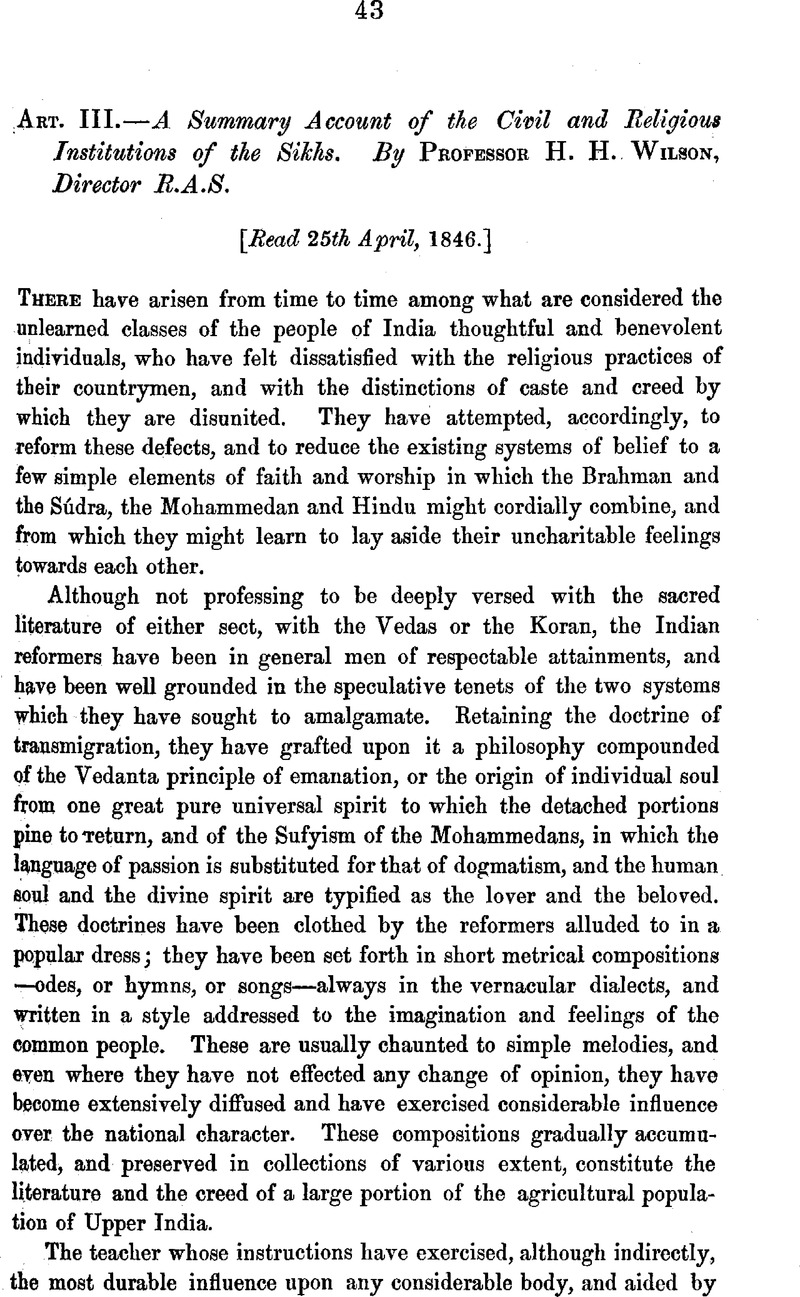Article contents
ART. III.—A Summary Account of the Civil and Religious Institutions of the Sikhs
Published online by Cambridge University Press: 14 March 2011
Abstract

- Type
- Original Communications
- Information
- Copyright
- Copyright © The Royal Asiatic Society 1848
References
page 44 note 1 Major Leech, J.A.S.B., No. 162, 1845; (but, query) if it is not the same as Kirtípur Dehra his burial place. Malcolm, As. Res. XI., 207. Malcolm calls his birth place Talwandi, or Rayapur, on the Beyah.
page 50 note 1 M. Jacquemont repeatedly observes that the Mohammedans and Hindus much outnumber the Sikhs. According to Captain Lawrence, the population of the Punjab may be loosely estimated at 1,500,000, of whom 750,000 are Hindus, 500,000 Mussulmans, and only 250,000 Sikhs. Captain Burnes made the population larger, but the proportions much the same.
page 59 note 1 The above summary has been drawn up in compliance with a wish expressed by some of the Members of the Society to be possessed of a brief notice of the institutions of the Sikhs which distinguish them from the Hindus in general. It is of course little more than a compilation from the accounts of the Sikhs already in print, especially those of Sir John Malcolm and Captain Murray, as prepared by Mr. H. T. Prinsep; recourse has been also had to the observations of recent travellers in the Punjab—particularly Messrs. Moorcroft, Burnes, Jacquemont, and Baron von Hügel, and to the amusing and characteristic work of Major Lawrence—Adventures of an Officer in the Punjab.
- 1
- Cited by




